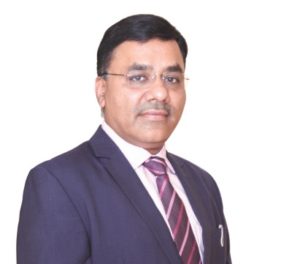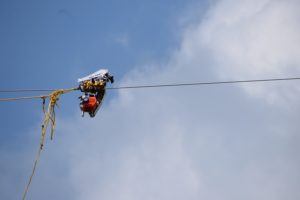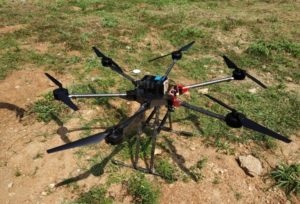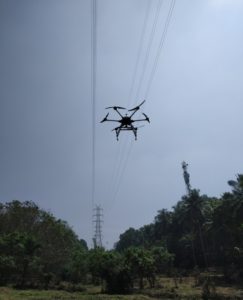Staying ahead with technology has helped ramp up our capabilities: Sterlite Power
- June 5, 2020
 Sterlite Power is a leading global developer of power transmission infrastructure with projects of over 10,000 ckm and 15,000 MVA in India and Brazil. With an industry-leading portfolio of power conductors, EHV cables and OPGW, Sterlite Power also offers solutions for upgrading, uprating and strengthening existing networks. In this exclusive interview with T&D India, we have Manish Agarwal, CEO-Solutions Business, Sterlite Power Transmission Ltd, asserting how cutting-edge technology is the only solution to solving India’s complex power transmission issues, and how Sterlite Power is championing this cause by heralding in pioneering power transmission technologies in India.
Sterlite Power is a leading global developer of power transmission infrastructure with projects of over 10,000 ckm and 15,000 MVA in India and Brazil. With an industry-leading portfolio of power conductors, EHV cables and OPGW, Sterlite Power also offers solutions for upgrading, uprating and strengthening existing networks. In this exclusive interview with T&D India, we have Manish Agarwal, CEO-Solutions Business, Sterlite Power Transmission Ltd, asserting how cutting-edge technology is the only solution to solving India’s complex power transmission issues, and how Sterlite Power is championing this cause by heralding in pioneering power transmission technologies in India.
Let us start with discussing your outlook for the transmission sector, how do you see prospects shaping up in the future?
 At the moment, all industries globally are grappling with the disruption caused by COVID 19. We have full faith in the way the Indian government is going all out to tackle this crisis on war-footing. So, while in the short term we have to face and overcome this global crisis, in the long term, I remain optimistic about the prospects for the Indian power transmissions sector.
At the moment, all industries globally are grappling with the disruption caused by COVID 19. We have full faith in the way the Indian government is going all out to tackle this crisis on war-footing. So, while in the short term we have to face and overcome this global crisis, in the long term, I remain optimistic about the prospects for the Indian power transmissions sector.
The future will be all about clean and sustainable energy. All countries including ours are moving swiftly in that direction. The challenge in India is that huge generation capacities are being added as the country is running the largest renewable energy (RE) expansion programme in the world. However, evacuation systems are not being built fast enough to keep pace with this causing a mismatch. Hence, there is an urgent need for transmission systems to be planned and developed ahead of generation.
Climate change is another significant challenge that the world is grappling with and India again is no exception. Going forward, keeping the transmission grid up and running in the face of drastic climate change and also creating a cyber resilient infrastructure, will be key issues that will need to be addressed.
Meanwhile, Sterlite Power, is actively engaged in Green Energy Corridor (GEC) projects and is striving to help India achieve its renewable energy targets. We will continue to pick up the most complex projects and deliver them while uncompromisingly maintaining highest standards of quality – while maintaining the health and safety of our workforce.
“We are driven by our core purpose of Empowering humanity by addressing the toughest challenges of energy delivery.”
Sterlite Power has been heralding in new transmission technologies in India. Tell us a bit about them.
 Yes, we have always been at the forefront of new technologies in power transmission. We are driven by our core-purpose of ‘Empowering humanity by addressing the toughest challenges of energy delivery’. We realised very early that technology is the answer to swiftly and effectively resolving some of India’s unique transmission congestion challenges. Rapid and unplanned urban evolution in India has spurred intense population density. There are RoW issues as space isn’t easily available for new transmission projects. In this context, we have heralded in several new technologies that will change the game in the transmission sector. All our solutions are aimed at helping utilities and power distribution companies address key energy delivery challenges through the framework of time, space and capital.
Yes, we have always been at the forefront of new technologies in power transmission. We are driven by our core-purpose of ‘Empowering humanity by addressing the toughest challenges of energy delivery’. We realised very early that technology is the answer to swiftly and effectively resolving some of India’s unique transmission congestion challenges. Rapid and unplanned urban evolution in India has spurred intense population density. There are RoW issues as space isn’t easily available for new transmission projects. In this context, we have heralded in several new technologies that will change the game in the transmission sector. All our solutions are aimed at helping utilities and power distribution companies address key energy delivery challenges through the framework of time, space and capital.
From heralding in ‘zero shutdown reconductoring’ for the first time in India, to introducing robotic technology for the installation of OPGW on high voltage power transmission lines under energized (live-line) conditions, staying ahead with technology has helped us ramp up our capabilities to deliver the best value to our customers. Our solutions like Dynamic Line Rating (DLR) and power flow controllers enable utilities to have real time assessment and control of power flows. These smart technologies can play a pivotal role in the integration of green energy sources into the grid which is a national priority. We recently tackled a unique project on a Ganga river-crossing, for which we innovated and designed the ACCC Ultra Low Sag conductor that will transform long-span stringing across river crossings and hilly terrains. So, we believe that adoption of these latest technologies can be a key enabler while resolving complex challenges in the transmission sector.
“States will need to look at uprate/upgrade technologies to cater to unprecedented power demand.”
Clearly, you are a passionate proponent of technology driving transmission solutions. How do you see these solutions remaining relevant going forward?
These solutions will not only stay relevant, but increasingly become the most viable option. India is home to several of the world’s fastest growing cities and this unplanned urban evolution, high density of population, limited availability of land, development aspirations of the people, etc, will only lead to greater demand for power in the years to come. This demand will put a lot of pressure, as we are already seeing, in the decades-old ageing transmission infrastructure in several states. Increasingly, states will have to look at uprate/upgrade technologies to cater to this unprecedented power demand. This can be done by enhancing power within existing power corridors, so that they won’t have to worry about right of way (RoW) issues, or huge capital and time investment, required to set up purely greenfield transmission infrastructure.
“We believe that the solution that we devised for Kerala can emerge as a blue-print for the rest of India.”
Your MSI (Master System Integrator) business is focused on uprate/upgrade of transmission lines. Tell us a bit about your experience in Kerala with Transgrid 2.0 and why you believe more states can adopt this model to meet their energy delivery needs.
 Yes, Kerala is a unique case study that truly merits a mention. It is a highly inhabited state and also geographically too it has undulating terrain, flora, fauna. There is hardly any wasteland or free space available. In this context, the state utility took a bold decision to undertake an extensive voltage upgrade and current uprate exercise to strengthen its power delivery networks to meet its power transmission objectives.
Yes, Kerala is a unique case study that truly merits a mention. It is a highly inhabited state and also geographically too it has undulating terrain, flora, fauna. There is hardly any wasteland or free space available. In this context, the state utility took a bold decision to undertake an extensive voltage upgrade and current uprate exercise to strengthen its power delivery networks to meet its power transmission objectives.
We are proud to be part of the transformational change that the government is bringing about. Through uprate/upgrade of its power corridors, the state is revamping its traditional energy delivery networks with the use of cutting-edge technologies like MCMV towers; alternate construction methods like micropiles; aerial technologies for stringing, etc. With the use of these technologies we are able to improve the transmission capacity in these corridors in many cases by 14X times.
Most significantly, we do this in compressed timelines, in a cost-effective manner and without taking up any additional space or new infrastructure. We do believe this case study had all the unique issues that most fast developing Indian states have due to RoW issues, urbanisation etc. This solution was ideal for the Kerala and seeing the grand success in implementation, we believe this has the potential to emerge as a blue-print for the rest of the country.


